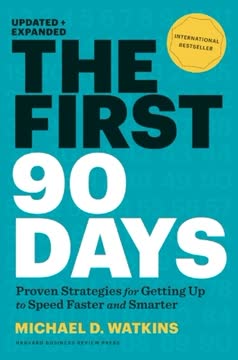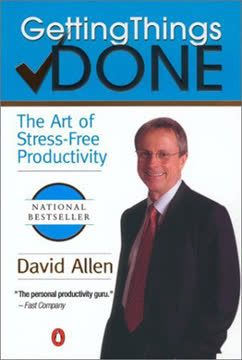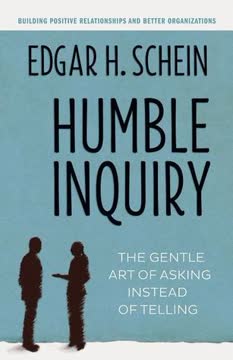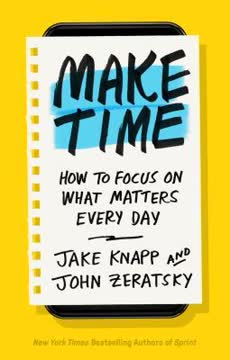Key Takeaways
1. Four Seconds: Pause, Breathe, Course Correct
Four seconds—one breath—is all it takes to stop yourself from a counter-productive knee-jerk reaction.
The Power of a Breath. In the midst of emotional turmoil or stressful situations, taking a four-second pause—the time it takes for a single breath—can be a powerful tool. This brief interlude allows you to disrupt counter-productive knee-jerk reactions and make more intentional, strategic choices. Meditation is a great way to practice this.
Resisting Impulses. The ability to resist urges is crucial for personal growth, improved relationships, and enhanced performance. Meditation helps cultivate this skill by providing practice in observing and redirecting attention away from distracting thoughts and impulses.
Mindful Decision-Making. By creating space between feeling and action, you gain the capacity to evaluate the potential outcomes of your choices before following through. This enables you to make smarter decisions that align with your desired results.
2. Rethink Goal Setting: Focus on Areas, Not Outcomes
A goal defines an outcome you want to achieve; an area of focus establishes activities you want to spend your time doing.
The Downside of Goals. While goal setting is widely accepted, it can lead to negative side effects such as a narrow focus, unethical behavior, distorted risk preferences, and reduced intrinsic motivation. The Ford Pinto and Sears auto-repair scandals are examples of this.
Areas of Focus. Instead of setting specific, measurable, time-bound goals, consider identifying areas of focus. This approach emphasizes activities and processes rather than predetermined outcomes, tapping into intrinsic motivation and encouraging collaboration.
Benefits of Focus Areas. By concentrating on areas of focus, you can avoid the pitfalls of goal setting while still driving progress. This approach fosters a more open, flexible, and enjoyable process, allowing for unexpected opportunities and positive surprises.
3. Follow Through: Shut Down the Sabotaging Mind
Motivation is in the mind; follow-through is in the practice.
Motivation vs. Follow-Through. Many people mistakenly believe that a lack of motivation is the primary obstacle to achieving their goals. However, the real challenge often lies in follow-through—the ability to consistently execute on intentions despite mental resistance.
The Sabotaging Mind. The mind can often sabotage aspirations by generating excuses, doubts, and distractions. To overcome this, it's essential to shut down the internal dialogue and make a firm, specific decision about what you want to do.
Practical Strategies. To improve follow-through, make very specific decisions about actions and don't question them. For example, "I will work out tomorrow at 6:00 A.M." When your mind starts to argue, ignore it and stick to your predetermined plan.
4. Ditch Perfection: Embrace "Good Enough" and Time Limits
If you want to get something done, become a busy person.
The Trap of Perfectionism. Striving for perfection can lead to overthinking, procrastination, and increased stress. It's often more effective to embrace a "good enough" mentality and focus on completing tasks rather than endlessly refining them.
Time Constraints. Imposing time limits can boost productivity by reducing the opportunity for overthinking and encouraging decisive action. The pressure of a deadline can help prioritize essential tasks and eliminate unnecessary distractions.
Change Expectations. Lowering expectations can alleviate pressure and allow for a more relaxed and creative approach. Instead of aiming for perfection, focus on achieving a meaningful outcome and delivering it simply and passionately.
5. Trust Yourself: Stop Asking, Start Seeing
There is good reason to learn from the wisdom of others. But there is also a cost: as we shape ourselves to the desires, preferences, and expectations of others, we risk losing ourselves.
The Pitfalls of Seeking Approval. While seeking feedback from trusted sources can be valuable, over-reliance on external validation can lead to a loss of self-trust and an inability to make independent choices.
Cultivating Self-Reliance. To regain confidence in your own insights, take time for quiet reflection and decide what you think before seeking external opinions. This process allows you to tap into your unique perspective and develop a stronger sense of self.
The Power of Independence. When you trust yourself, you become more diligent, resourceful, and committed to your work. You're more likely to identify and address problems independently, leading to higher-quality outcomes.
6. Sometimes, Doing Nothing Is the Best Strategy
When many cures are offered for a disease, it means the disease is not curable.
The Paradox of Proactivity. Our inclination to take action can sometimes lead to unnecessary interventions that exacerbate problems. In certain situations, the most effective approach is to do nothing and allow the situation to resolve itself.
Identifying When to Do Nothing. If past experience or data suggests that multiple solutions are possible but none are reliably successful, or if you've tried several solutions without success, it may be time to try doing nothing.
Applications of Doing Nothing. This strategy can be applied in various contexts, including medical conditions (e.g., the common cold), business creation (incentives), and interpersonal relationships (arguments).
7. Manage Expectations: Accept Reality to Reduce Stress
Almost everything we freak out about is somewhere in the one-to-two range of dashed expectations.
The Root of Stress. Stress arises from the gap between our expectations and reality. As our expectations increase, thanks to technological advancements and societal pressures, we become more prone to frustration and stress.
Changing Reality vs. Changing Expectations. To reduce stress, you can either change the reality around you or change your expectations. While changing reality can be challenging and often counterproductive, adjusting your expectations is a more effective strategy.
Gaining Perspective. When faced with unmet expectations, take a step back and assess the situation on a scale of one to ten, with ten being the worst possible reality. This exercise can help you realize that most stressors are relatively minor and not worth getting worked up about.
8. Ritualize Attention: Make Time for Sacred Moments
The power of ritual is profound and underappreciated.
The Essence of Ritual. Rituals are about paying attention, stopping for a moment, and noticing what you're about to do or what you've just done. They're about making the most of a particular moment and bringing reverence to everyday activities.
Rituals in Daily Life. Incorporate rituals into your daily routine to enhance focus, appreciation, and productivity. This could involve taking a deep breath before starting work, arranging your pens with intention, or acknowledging the complexity of a colleague's work.
Benefits of Rituals. By elevating each activity, you'll take it more seriously, derive greater pleasure from it, and foster a sense of respect for yourself and others. This, in turn, will lead to improved collaboration and better results.
9. Prepare Daily: Anticipate Risks and Challenges
Are you prepared for this day?
The Importance of Preparation. In the rush to accomplish more, we often neglect preparation, leading to mistakes, wasted time, and increased stress. Taking the time to prepare for each day is crucial for maximizing productivity and minimizing risks.
Daily Questions. Before starting your day, ask yourself key questions: What do I want to achieve? What risks might I encounter? Am I focused on what matters most? Will my plan for today bring me closer to my goals?
Benefits of Preparation. By anticipating challenges and focusing on your objectives, you can approach each day with greater clarity, confidence, and effectiveness. This proactive approach can significantly enhance your overall productivity and success.
10. Reset Yourself: Unplug to Restore Perspective
When you unplug and wait for a minute, you restore yourself to your factory-default settings, which for most of us tend to be generous, openhearted, creative, connected, and hopeful.
The Power of Disengagement. In a world of constant connectivity and information overload, strategic disengagement can be a powerful tool for restoring balance and perspective.
The One-Minute Reset. When facing a difficult situation or feeling overwhelmed, unplug from technology and other distractions for just one minute. This brief pause allows you to reset your perspective and reconnect with your core values.
Applications of Unplugging. This strategy can be applied in various contexts, including contentious meetings, frustrating projects, and strained relationships. By unplugging, you create space for renewed energy, creativity, and compassion.
11. Stop Performing, Start Experiencing Life
It’s not a performance; it’s an experience.
The Performance Trap. Many of us approach life as a performance, constantly seeking approval, accolades, and recognition. This mindset can lead to stress, unhappiness, and mediocre performance.
Embracing the Experience. Instead of trying to look good, focus on exploring what something feels like and learning from the process. View failures as valuable learning opportunities rather than sources of shame.
Shifting Your Perspective. To let go of performance and embrace experience, complete the sentence "This is what it feels like to..." throughout the day. This exercise helps you immerse yourself in the present moment and appreciate the richness of life.
12. Prioritize Relationships: Be a Good Friend
It’s a pretty good bet that we really are here to make friends.
The Value of Friendship. In our competitive work spheres, it's easy to de-prioritize friendships in favor of productivity and achievement. However, strong and supportive friendships are essential for sustainable success and overall well-being.
The Benefits of Giving. Research shows that giving to others makes us happier than taking things for ourselves. Spending money on gifts and charities, or helping colleagues achieve their goals, can lead to greater fulfillment and stronger relationships.
Friendship in the Workplace. Having a best friend at work is a strong predictor of engagement, productivity, and success. Strong friendships can also increase wages and job security.
13. Empathize First: Connect Before Correcting
Empathy. She needed to feel that she wasn’t alone, that we all loved her and that her failure didn’t change that.
The Power of Empathy. When someone experiences failure or disappointment, our instinct is often to offer advice, provide context, or motivate them to do better. However, what they often need most is empathy—a sense of being understood and supported.
The Empathetic Response. To provide empathy, simply listen to the person without interrupting, offering advice, or trying to fix the problem. Reflect back what you hear them saying and acknowledge their feelings.
Benefits of Empathy. Empathy communicates trust and acceptance, creating a safe space for vulnerability and growth. This, in turn, fosters greater resilience, collaboration, and performance.
14. Take the Blame: Own Responsibility to Learn
If something isn’t your fault, then there’s no reason for you to do anything differently.
The Futility of Blame. Blaming others is a common defense mechanism, but it prevents learning and hinders problem-solving. When we attribute failures to external factors, we avoid taking responsibility for our own actions and miss opportunities for growth.
The Power of Ownership. Taking the blame, even for things you're only remotely responsible for, fosters a culture of accountability and transparency. It also encourages others to take responsibility and focus on solutions rather than assigning blame.
Building Confidence. Taking responsibility requires courage and self-confidence. It demonstrates a willingness to learn from mistakes and a belief in your ability to improve. This, in turn, strengthens your credibility and inspires trust in others.
15. Neutralize Negativity: Be Helpful, Not Just Nice
You don’t need to change your response. You just need to redirect it.
The Ineffectiveness of Positivity. Countering someone's negativity with positivity can be argumentative and dismissive of their feelings. It can also make you appear out of touch with the reality of their experience.
The Downward Spiral of Negativity. Responding to negativity with your own negativity only adds fuel to the fire. It creates a cycle of complaining, gossiping, and snarkiness that erodes trust and productivity.
A Three-Step Process. To neutralize negativity, follow these steps: (1) Understand and validate their feelings, (2) Find a place to agree with them, and (3) Reinforce whatever positive feelings they do show.
16. Share the Glory: Credit Others for Success
A movie is only considered great when all the various parts are independently, and collaboratively, great.
The Myth of Individual Achievement. We often attribute success to individual talent or leadership, but most achievements are the result of collaborative effort. Highlighting one person or team can undermine the contributions of others and create resentment.
The Power of Humility. Effective leaders recognize the value of every team member and distribute credit broadly. They understand that success is a collective endeavor and that acknowledging the contributions of others fosters loyalty, motivation, and collaboration.
Focus on the Whole. Instead of singling out individuals, emphasize the importance of teamwork and the interconnectedness of different roles. Celebrate the success of the entire organization and recognize the contributions of those who work behind the scenes.
17. Listen for the Unspoken: Unpack the Real Message
We confuse the package with the message.
Beyond the Surface. Communication is often clumsy and imperfect. We must look beyond the surface of what is said and listen for the unspoken needs, emotions, and intentions behind the words.
The Art of Interpretation. When faced with a request, demand, or assertion that doesn't seem to make sense, resist the temptation to react. Instead, pause, ask questions, and strive to understand the other person's perspective.
Building Connection. By listening for the unspoken, you can build deeper connections, resolve conflicts, and foster a more supportive and collaborative environment. This approach requires empathy, patience, and a willingness to look beyond your own assumptions.
18. Embrace Boredom: Make Space for Creativity
Being bored is a precious thing, a state of mind we should pursue.
The Value of Unproductivity. In our hyper-efficient world, we often fill every spare moment with tasks and distractions. However, boredom is a valuable state of mind that allows our minds to wander, make connections, and generate creative ideas.
Creating Space for Boredom. Resist the urge to fill every empty moment with activity. Allow yourself time to sit, wait, and do nothing. These "wasted" moments are vital for processing information, organizing your thoughts, and connecting the dots.
The Benefits of Boredom. By embracing boredom, you can tap into your creativity, gain new insights, and improve your overall well-being. This requires a conscious effort to resist the allure of constant stimulation and embrace the power of quiet reflection.
19. Reclaim Your Sweet Spot: Focus on Exceptional Skills
Time management isn’t primarily about using minutes well, it’s about using yourself well.
The Danger of Distraction. Many of us spend the majority of our time outside our "sweet spot"—the intersection of our strengths, weaknesses, differences, and passions. This can lead to frustration, mediocrity, and a sense of unfulfillment.
Identifying Your Sweet Spot. To reclaim your sweet spot, recognize what makes you exceptional. What are you unusually good at? What do you enjoy doing? What sets you apart from others?
Protecting Your Time. Once you've identified your sweet spot, prioritize activities that align with it and delegate or eliminate those that don't. This requires discipline, focus, and a willingness to say no to distractions.
20. Learn Other People's Rules: Adjust Expectations
Don’t go to a hardware store and get upset when they won’t sell you milk.
The Problem with Expectations. We often get frustrated when others don't behave as we expect them to. This is especially true in diverse and globalized workplaces, where cultural differences can lead to misunderstandings and conflict.
The New Golden Rule. Instead of treating others the way you'd like to be treated, treat them the way they'd like to be treated. This requires understanding their cultural background, communication style, and expectations.
Adjusting Your Approach. By learning other people's rules of engagement, you can reset your expectations and communicate more effectively. This can lead to stronger relationships, improved collaboration, and greater overall success.
21. Tell Stories: Influence Through Narrative
You change other people with stories.
The Power of Stories. Traditional methods of persuasion, such as telling people what to do or offering rewards and punishments, are often ineffective. Stories, on the other hand, can be a powerful tool for influencing behavior and shaping culture.
Creating Change Through Stories. To create change, do dramatic, story-worthy things that represent the behavior you want to encourage. Then, let others tell stories about it.
The Importance of Peer Pressure. Share stories about people who are already exhibiting the desired behavior. This can create a sense of peer pressure and encourage others to follow suit.
22. Reset Mental Habits: Small Changes, Big Impact
The amount of time you will save by making better choices will be immeasurable. The positive impact you will have—on your life, your relationships, and your work—will be invaluable.
The Cumulative Effect of Small Changes. This book has explored a range of strategies for improving your mental habits, strengthening your relationships, and optimizing your work habits. While each strategy may seem small on its own, their cumulative effect can be transformative.
The Power of Awareness. By becoming more aware of your knee-jerk reactions and consciously choosing more productive responses, you can create a ripple effect that positively impacts every aspect of your life.
A Journey of Continuous Improvement. The journey of personal and professional growth is ongoing. By embracing the principles outlined in this book, you can cultivate a mindset of continuous improvement and unlock your full potential.
Last updated:
Review Summary
Four Seconds receives mixed reviews, with ratings ranging from 1 to 5 stars. Some readers find the book insightful and helpful, praising its practical advice on productivity, relationships, and decision-making. Others criticize it as repetitive, lacking substance, or filled with common-sense ideas. The book's structure of short, blog-like chapters is appreciated by some but criticized by others. Many readers note that the title is somewhat misleading, as the "four seconds" concept is only a small part of the book's content. Overall, opinions are divided on its usefulness and relevance.
Similar Books










Download PDF
Download EPUB
.epub digital book format is ideal for reading ebooks on phones, tablets, and e-readers.





